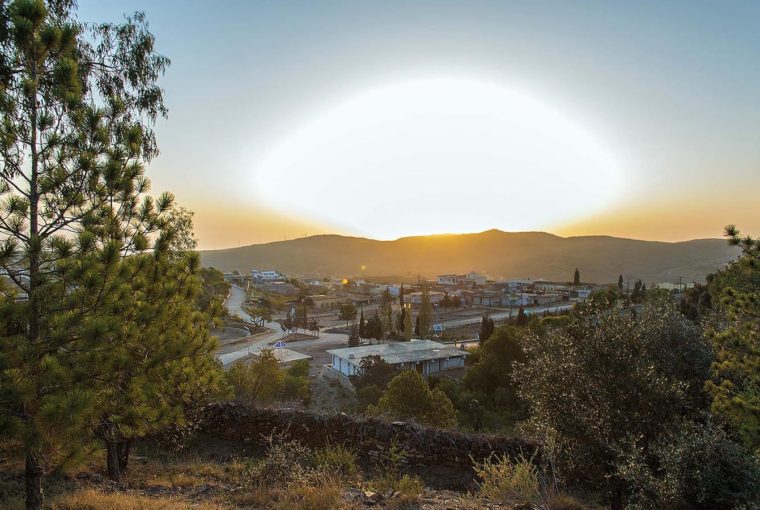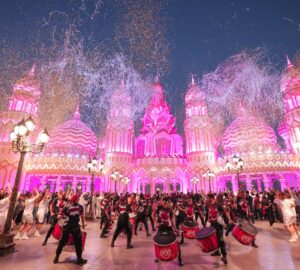The mountains call, and instead of going up North, writer and environmentalist Nuzhat Saadia Siddiqi goes down South, to the rolling hills of the Sulaiman mountain range, past DG Khan, and ultimately reaching her destination: Fort Munro. What she finds is mountains shrouded in mystery and history, and an unbeatable will to survive and thrive.
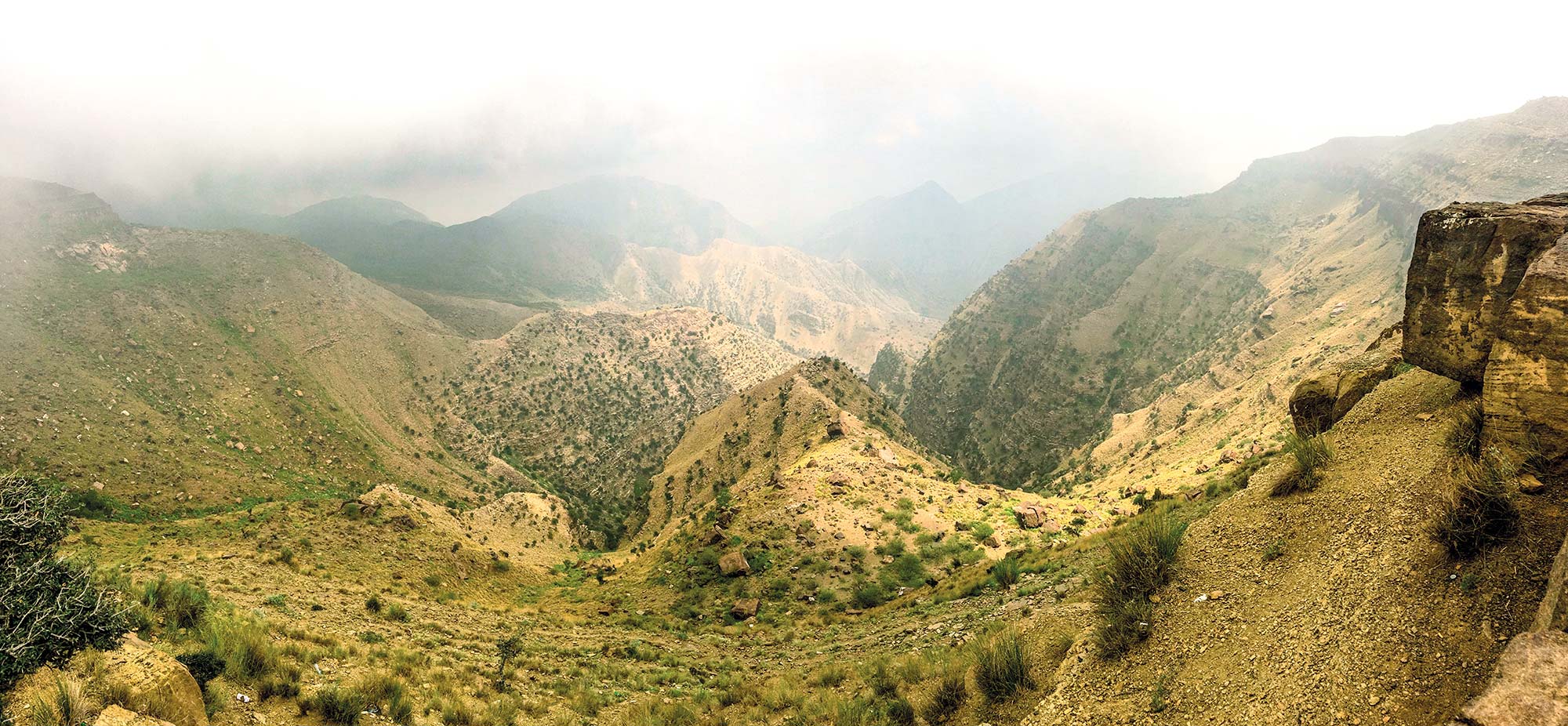
When you think of mountains in Pakistan, you think of the North. You think of the cold, detached glory of the peaks in Gilgit-Baltistan, you think of the indolent grace of Swat and beyond. The mountains in the North hold us, and thousands of foreign tourists in thrall. That’s where we run to when it is summertime and our plain existence gets too unbearable. That’s where we find ourselves to rejuvenate, to convalesce, and to celebrate. And that’s definitely where we find ourselves if we wish to pit our human endurance against the unforgiving fortitude of nature, hoping to scale the mighty K2 or the domineering Nanga Parbat. The North is our default adventure escape now and features heavily in our social media profiles. But what of other mountains in the country? What of other wildernesses yet to be traversed? What of the adventures we are missing out on because our mountain compass is so firmly pointing towards the North?
It was perhaps the right time for me this summer to answer these questions and head towards a landscape I had only seen vaguely from the window of my many plane rides between Lahore and Karachi. A chance encounter with an old friend further convinced me against following the hordes up North and discover, instead, what I have now come to refer to as a geographical symphony: the rolling hills of the Sulaiman mountain range in the South, past DG Khan, and the small town situated up at 6,470 feet among them. My destination was Fort Munro, and the journey towards it and beyond proved to be a Thoreauesque exercise in understanding the unfamiliar that exists in wilderness, and the strength of human spirit beyond our socially shaped imagination.
A British outpost strategically developed in Southern Punjab, overlooking Baloch valley towns (the nearest being Rakni), Fort Munro has decidedly humble bearings. The indolent mountainside rises slowly, lulling you into a sense of security that seems to be missing in the twists and turns of many Northern hill stations. This was a blessing in disguise, since I suffer from the worst form of vertigo that can leave my head swimming on the twists and turns of mountain roads. I joked to my travel partner, my husband Khurram, that if we fall into a ravine the most that will happen is that we will take a few tumbles in our vehicle and call it an adventure sport. There are no steep climbs as the highway beyond DG Khan snakes between the moderately high peaks of the Sulaiman Range and takes you to Fort Munro, but the views are breathtaking. The peaks, indicative of a rich geological history, offer a stark beauty that you wouldn’t find elsewhere in the entire country.
The traffic that we encounter on our road to Fort Munro is mostly composed of large trucks carrying goods either to Balochistan or beyond, or bringing their load to Punjab and then going further up North. Fort Munro is, after all, located on Quetta Road. We are stopped only once at a checkpost manned by the personnel of Border Military Police that is responsible for maintaining law and order in the area. While one of the policemen sternly checks our NICs, I spot a board right behind him that bears a warning:
NO FOREIGNER INDIVIDUALS BEYOND THIS POINT.
Intrigued, we inquire from our Multani driver why, and we are told that it has something to do with the Pakistani atom bomb. I find it funny, but later, once in Fort Munro where I get to meet the DG of the newly constituted Fort Munro Development Authority (FMDA), Mr. Asfandyar Janjua, I am informed of the rich uranium deposits in the mountainous area and the extraction thereof by the Pakistan Atomic Energy Commission.
“Wouldn’t it be difficult to attract the kind of foreign tourists here that prefer the North?” I ask.
“We’re hoping the local tourists from cities other than in the Southern Punjab belt would come,”
Mr Janjua says.
A simple plan, but one that has a lot of heart and merit.
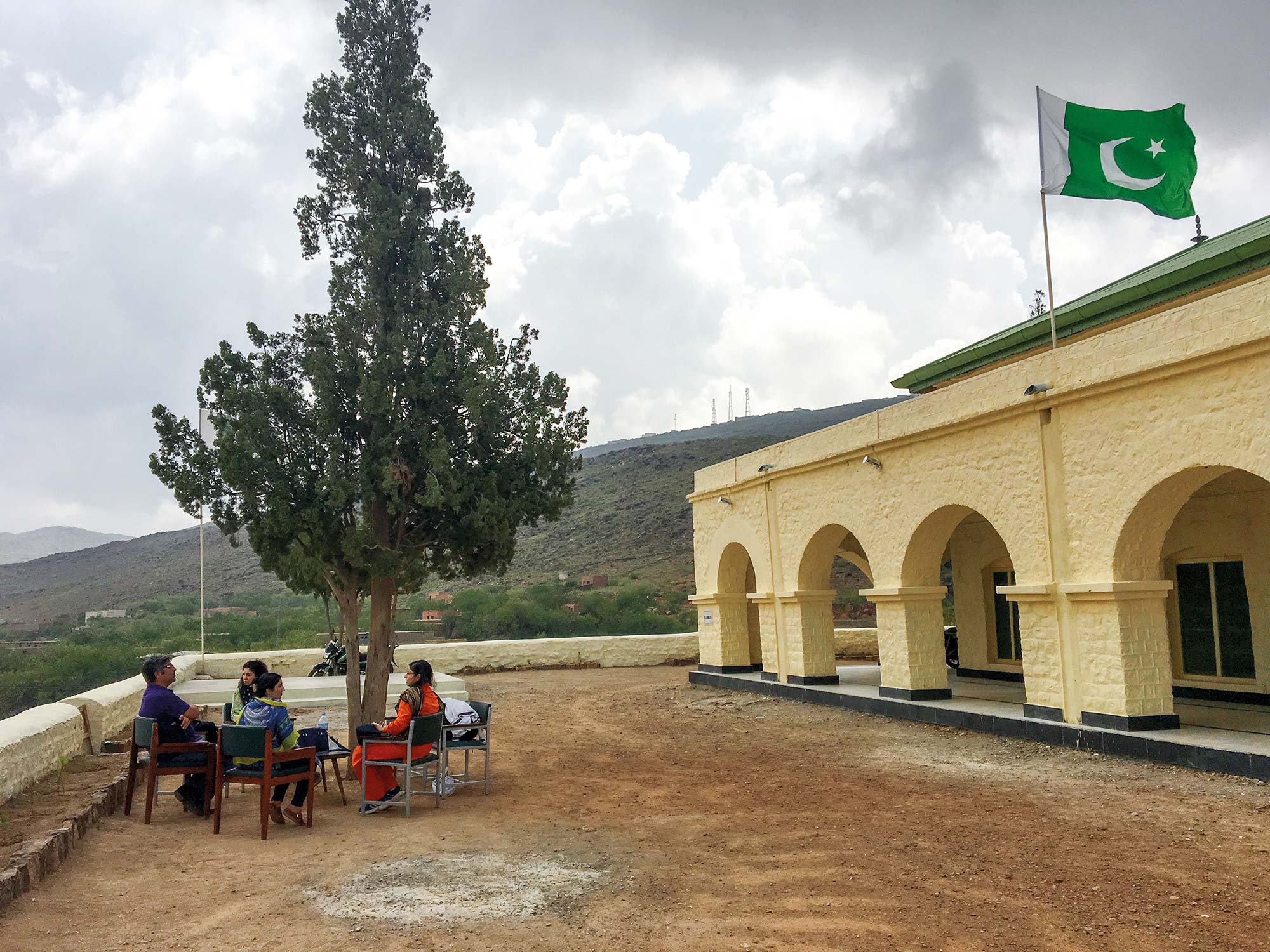
The people of Fort Munro, as I encounter them, are kind, curious, quiet and hospitable. Mostly nomadic, they rely on local tourism for their income, apart from goat herding and working as drivers for big transport and cargo companies that operate in the area. Almost all go down into the towns in the plains in winter, because winter brings with it harsh weather conditions and there is no regular supply of gas and water. Still, they persist. The first day we are in Fort Munro, our hosts send us a whole roast leg of lamb (the traditional sajji), rice with strands of carrot and plump raisins cooked in the fat dripping from the sajji, a deliciously nutty mutton korma and fresh tandoori roti, with a side of chilled and crispy salad comprising of onions, tomatoes and cucumbers. The Baloch inspiration in the cuisine is unmistakable and we are informed by our local driver that most of the vegetables used in the area come from Rakni, a small market town 12 kilometers away from Fort Munro in Balochistan.
Other meals over the course of our four-day stay also feature sajji prominently, and our hosts everywhere encourage us to devour the meat melting off the bones quickly so that it does not become tough. In the morning we drink tea made of goat’s milk, and parathas that have butter churned from goat’s milk as well. Since it is “off season” for tourists who had their last seasonal hurrah at 14th August in Fort Munro, the city runs at an easy pace. We are offered tea and sweet syrup-soaked mini-cakes that are a local variation of the French Madeleines everywhere we go. Most of the people offering us these treats refuse to take money, or do so quite reluctantly. We are inundated with these little food favours because we are the only people around with our camera and our phones out, trying hard not to openly gape at the miasma rising through the canyons, the clouds unfurling above the mountains, the stars resplendent above the panoramic hills through which, on a clearer day, we can peek into a valley in Balochistan from our vantage points.
Our cup, quite literally, runneth over.
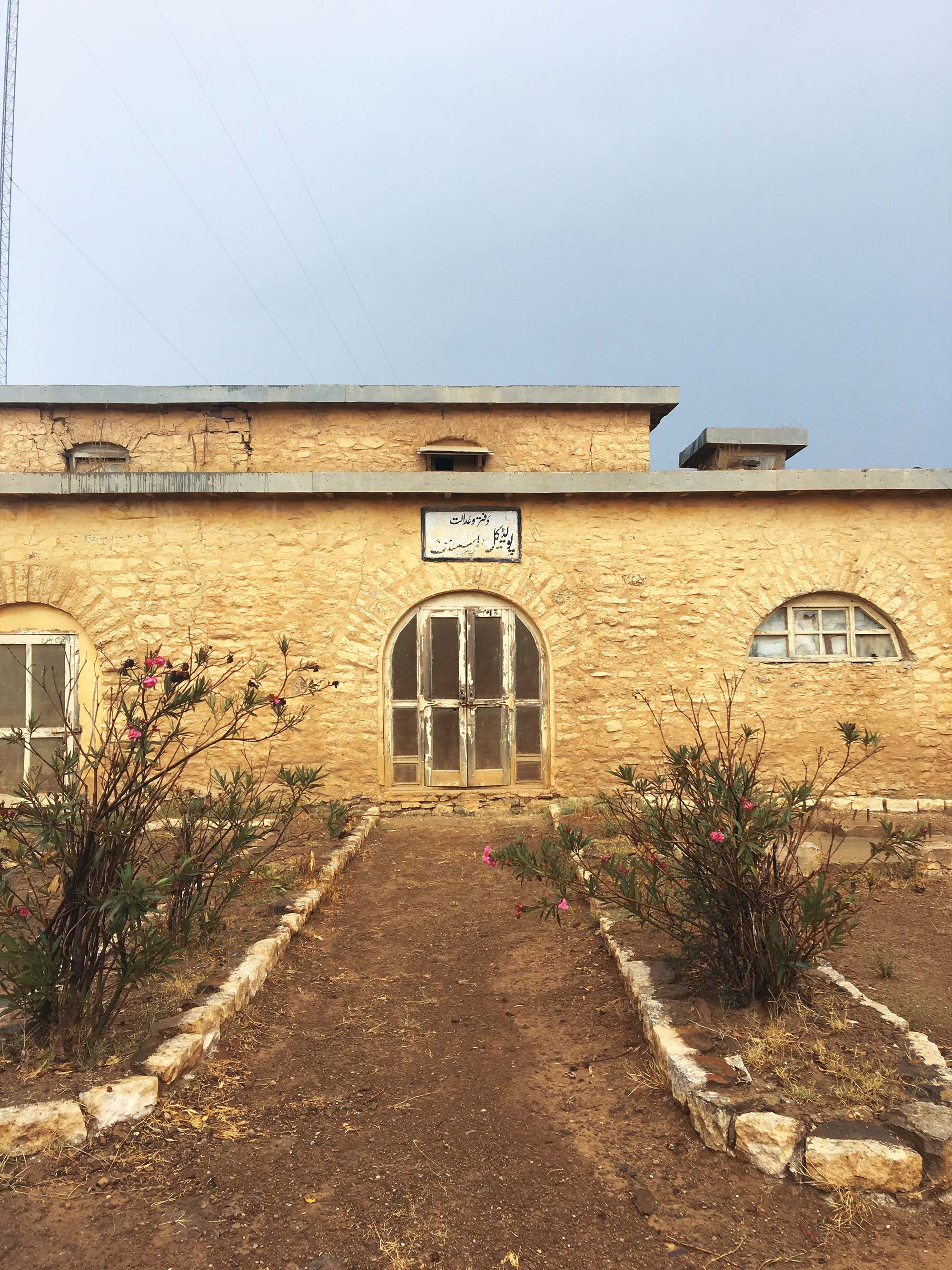
Our driver in Fort Munro is a jolly man who also works for the Fort Munro Development Authority. He is eager to show off his town so on the very first day that we arrive he decides to take us up a winding, snaking, completely deserted road to a hill top locally known as Anari – with a “rey”, he is quick to tell us, since the name comes from the local variety of pomegranate trees that once grew in the area. At the top, it is the hour before sunset and the sun’s light is tender like molten gold, lending a magical glow to the expanse of the canyon that stretches till the eye can see past the height of Anari. There are no signs of the pomegranate trees that gave the peak its name, perhaps extinct because of fuel wood logging or lack of water sources, but we are free to imagine them, and it isn’t a hard task given the aura created by a perceptible drop in temperature as the sun dips lower to bid the day farewell.
My husband and I sit in silence, gazing endlessly into the canyons and picking up patterns in the scarce vegetation on the sides of the distant peaks. While my husband offers a silent, non-denominational prayer, I ponder upon the fact that this part of the country has sadly suffered from the kind of academic and even romantic indifference that it holds no place in our nation’s imagination. Very little is written about the place, and whatever was chronicled about the history of the area has either been lost or is unavailable to read. There are geological studies that have been conducted in the area but the language is dense and pedantic, full of jargon that is hard to understand by the layperson. I think about the thousands of years that have taken to shape the rocks and the terrain of this area. I try to wrap my mind around the cosmological incident that created an almost similar but much smaller version of the Grand Canyon before me. Or is it more like Cappadocia? Some trespassers from the alleged “civilization” we come from interrupt my silent contemplation: two bottles of Coke being offered to us by a local tea stall owner, with our choice of packaged biscuits. An odd combination, but one I accept because it is a gift.
I also make a rare exception when the shopkeeper and the driver offer to take our photos with the magnificent backdrop and take a few photos with my husband, taking directions at this impromptu couple photoshoot at a place that would make a perfect backdrop for any kind of photoshoot.
We leave at sundown, with the petrified vegetation resembling crouching human forms. But there is no horror here. Only the immense promise of unconventional natural beauty.
Everywhere we go in this area, there are goats and sheep. Unhurried and frank, they not only fill the alleys of Fort Munro here and there, they also dot the landscape like a pastoral painting along the hills and in the secret valleys contained within them. With a certain scarceness of wildlife in the area apart from the much-reviled snakes that have indolently retired for the winter, these sheep and goats seem almost exotic in their element. Later that day I get to meet Awais Leghari. He is a present PML-N MNA and a native of DG Khan whose family’s ties to the area in and around Fort Munro are centuries old. He is also the Chairperson of the Fort Munro Development Authority. He invites Khurram and I for dinner at his home where we get to meet his lovely wife and son, who are as proud of Fort Munro as he is, and plan to continue working on projects that will be beneficial to the locals and the area, and will put Fort Munro on the map, so to speak. There is certain poignancy in Mr. Leghari’s voice when I ask him about any local wildlife.
“It was all killed off,” he says, “either by hunters or because of the indifference of the local tribesmen.”
The Sulaiman Markhor apparently once roamed the hilltops but is no longer found in the area, and migratory birds are scarce. You destroy the habitat and they refuse to offer you the pleasure of their company. The snakes, however, prove to be hardier than even men. Mr Janjua, in particular, has seen the tenacity of local snakes, with a blood-curdling display of climbing the rafters of the home he was staying in after his posting as DG FMDA to get to some pigeon eggs.
Mr. Janjua never wants to see another snake again, and his driver further adds to serpentine horror as he repeats a harrowing tale of how his father was bitten by one while out walking in a dark and stormy night (but was ultimately saved). But regardless of the fear, the snakes are presently one of the only hopes of striking an ecological balance in Fort Munro.
Under the Olive Tree…
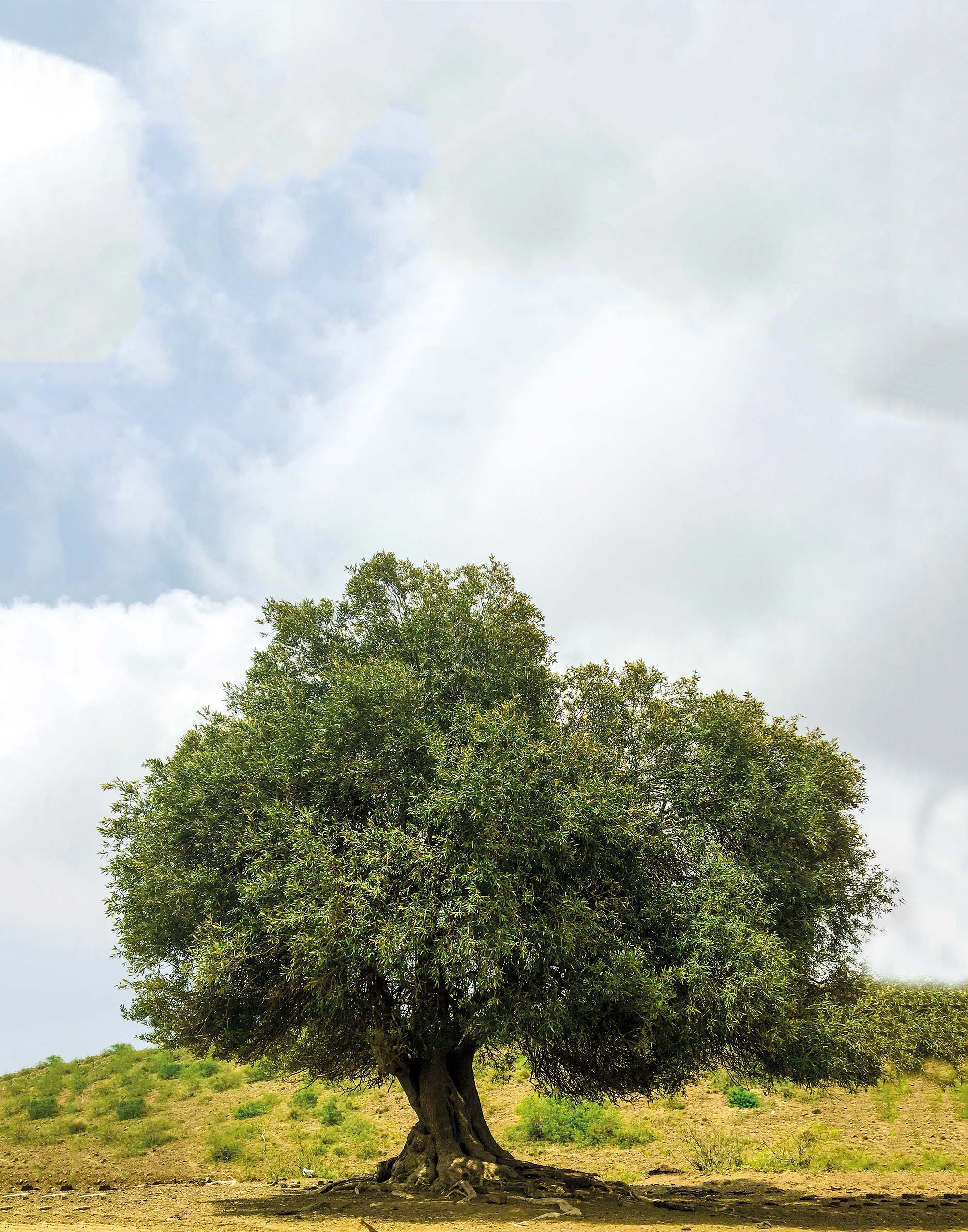 On a remote hill top in Fort Munro, a lone olive tree stands strong, overlooking rolling hills and deep canyons till the eye can see. A sentinel that cannot bear fruit, this tree is the last of what very well may have been an olive grove. But its brothers are now long gone. No sign of their existence remains, either in nature or in human record. On top of that hill, which the locals call the Moon View Point, the only witness to the tree’s solitary existence is the waxing and waning moon. But the tree still stands resolute, unfettered by human intervention, home to a lonely monitor lizard that, when I got near it, wove around the tree’s exposed roots and vanished into a dent just underneath them. That monitor is also quite possibly the last of its kind in the area. Once teeming with the species, now you would be hard pressed to spot them. The locally known saanda has succumbed to over-hunting by humans for the supposed benefits its various parts that are liquefied and turned into oil to cure everything from rheumatism to impotence. Here, on the hill, so far away from human traffic, the monitor survives along with the olive tree, both signifying a kind of resilience and fortitude that, in my four days in Fort Munro, I have come to associate the place, and its people.
On a remote hill top in Fort Munro, a lone olive tree stands strong, overlooking rolling hills and deep canyons till the eye can see. A sentinel that cannot bear fruit, this tree is the last of what very well may have been an olive grove. But its brothers are now long gone. No sign of their existence remains, either in nature or in human record. On top of that hill, which the locals call the Moon View Point, the only witness to the tree’s solitary existence is the waxing and waning moon. But the tree still stands resolute, unfettered by human intervention, home to a lonely monitor lizard that, when I got near it, wove around the tree’s exposed roots and vanished into a dent just underneath them. That monitor is also quite possibly the last of its kind in the area. Once teeming with the species, now you would be hard pressed to spot them. The locally known saanda has succumbed to over-hunting by humans for the supposed benefits its various parts that are liquefied and turned into oil to cure everything from rheumatism to impotence. Here, on the hill, so far away from human traffic, the monitor survives along with the olive tree, both signifying a kind of resilience and fortitude that, in my four days in Fort Munro, I have come to associate the place, and its people.
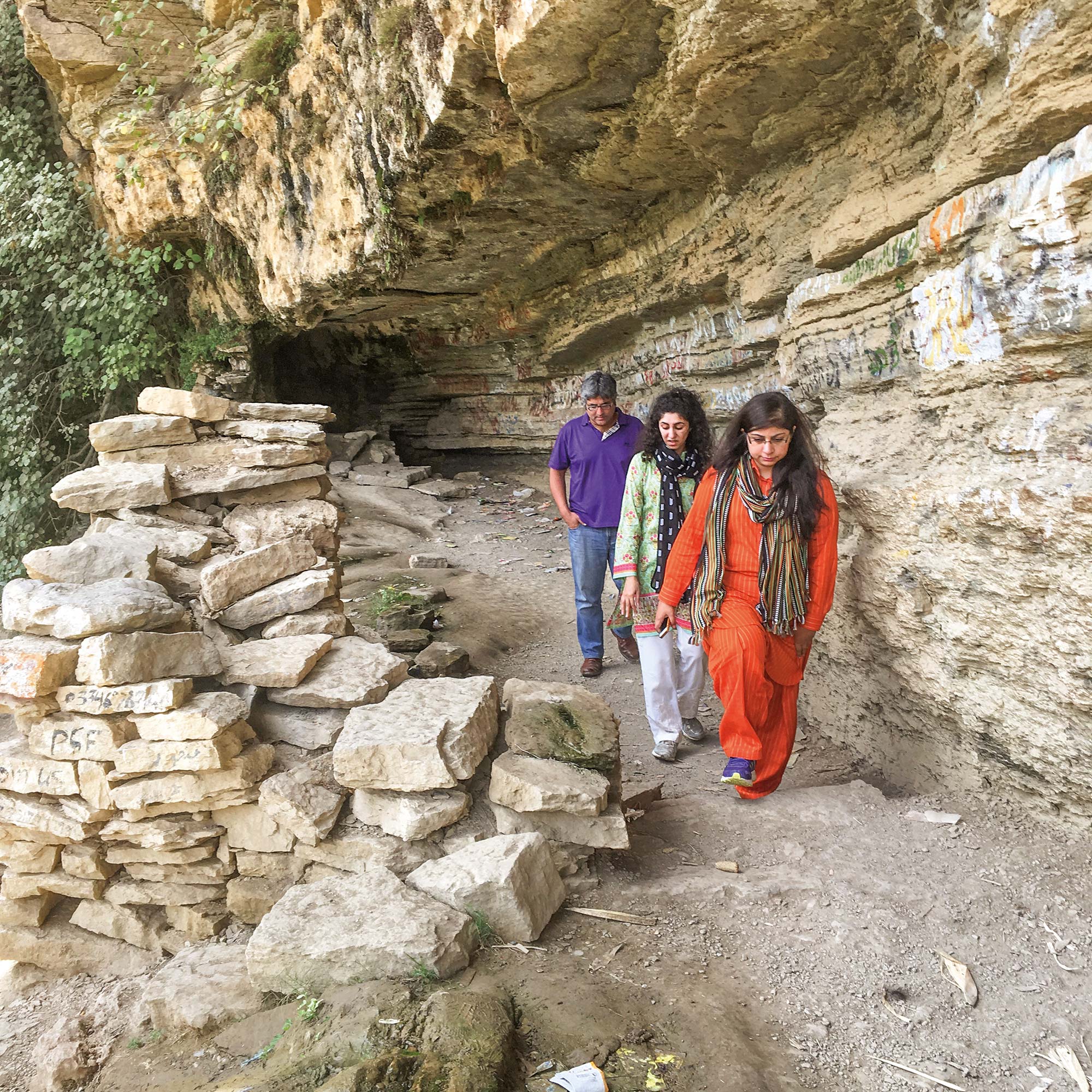
Our third day in the area is dedicated to such revelations. Mr Janjua takes time to lead us on a hike on the side of a hill that has overhanging vines, a thick copse of strung-out vegetation that is hard to distinguish into species. While this area is extremely arid, there is water trickling down from the sides of this particular hill. Indeed there is a rain-water storing small lake nearby that may be providing water to this area, but it is questionable. What’s not up for questioning, however, is the Pyaala we find, a birdbath-like natural carving underneath a stony alcove at the end of our short trek. Local legend says that the Pyaala was a gift of a holy man, a saint, to the people of the area, because according to them, it would always be filled with fresh water for those thirsty and parched.

I cannot vouch for the freshness of the water because I am not brave enough to take a drink, but I am convinced of the veracity of the tale because of the virtue of the setting. It almost seems like something out of a Harry Potter scene. From the books, not the films.
On our last day in Fort Munro, we decide to explore the mountain range even further and enlist the help of Anum Raheel, a deputy director working with the FMDA. We are in search of Yaqbai, the highest peak in the region, from where you can apparently see the whole of the landscape of the area. The road is still being made in the region, and the journey is tough. We head out with hopes and in good cheer, but along the way, we face our first test: torrential rain. Do we stop or do we keep going? We decide to move ahead but lose our way. We see football field sized grounds, all naturally formed, along the dirt and gravel road. And we see all of Fort Munro as we weave through the heights on the particular mountainside. But soon we realize that our destination has eluded us. There are no signs that can guide us, and no signals on our phone for a quick consultation with Google Maps. This is the wilderness beyond wilderness; here our human endeavour finds its match. And relents. We stop at a certain spot, hilariously speculating which direction Yaqbai may be in. Our drivers point in different directions, and Ms. Raheel is apprehensive, wondering if we have ended up in the uranium-mining zone, which is not open for civilians.
But we haven’t. We are somewhere between Yaqbai and the uranium extraction points; the wind is wild and chilling, the clouds suddenly clear up, we see hills that could stand in comparison with the rolling hillsides of Ireland and not come up short. We are completely lost, and instead of being an annoyance, we learn our final lesson in humbleness, consoled by the peace of the place
My mother, a teacher of geography and history, has two very distinct ways of describing mountains. One is academic, rooted in science and fact, and the other is what the heart constructs, moved by beauty. Beyond the textbook definition of mountains, she is eager to tell me that mountains are the earth’s way of reaching up to the heavens, the height almost an indication of the posture of prayer. And, in her words, if the Northern mountains put the fear of God in our hearts, the Southern mountains, with their humble stature, put the love of God in our minds. We should be compelled to visit them not just for the thrill of the altitude but for humble introspection and meditation about what it means to be human, surrounded by such different facets of beauty, what it means to survive with the barest of means, what it means to strive to make something out of nothing, to declare your faults to the world and invite hope and wonderment.
I think of these words as we make our journey back to Lahore. They ring true.
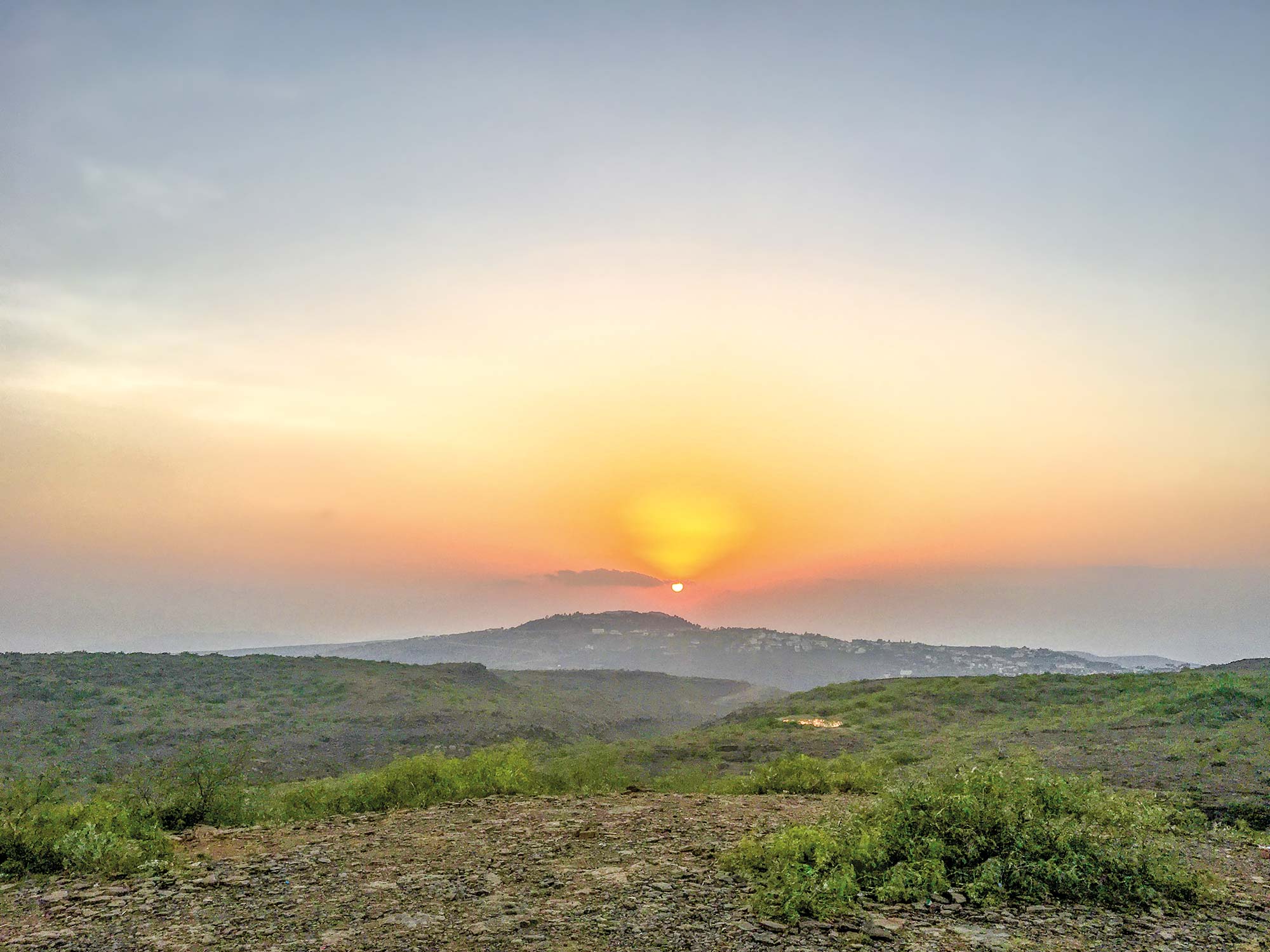
There are two ways to get to Fort Munro from any part of the country: either you fly or drive to Multan or DG Khan. After that, you take the national highway N-70, a scenic route that runs towards Muzaffargarh after crossing river Chenab and the mighty Indus. Past DG Khan it begins ascending up the Sulaiman Range to eventually reach Fort Munro. Beyond the hill station, the N-70 continues onwards to Balochistan, entering the province through the town of Rakhni. Driving from Multan to Fort Monro takes just under 4 hours while the journey via car from DG Khan is roughly 2 hours.
Did you Know
- “The last tribal stronghold; …a British outpost and summer headquarters for the administration (of the Raj); this colonial hill station had officers permanently positioned here.” Initially set up by Sir Robert Groves Sandeman in the later part of the 19th century, Fort Munro was named after Colonel John Munro, the Commissioner of the Derajat Division.
- The hamlet is part of the mythical Sulaiman Mountain Range, which is the southern extension of the famed Hindu Kush. Standing at a little over 6,400 ft, it lies at the cusp of the provincial border where Balochistan meets Punjab. Like most of Southern Punjab, it is an underprivileged area.
- However, the wheel of fortune seems to be turning in favour of this historic hill station. Recently the federal government has released funds for the development of Fort Munro and the Fort Munro Development Authority (FDMA) has been set up under the chairmanship of MNA Mr. Awais Leghari, whose family’s ties to the area (which is also known as Tuman Leghari) go back centuries.
- Work is underway to revive this place as a cool resort for the people of South Punjab, with infrastructure being laid out for new roads, R&R activities, the provision of clean drinking water and the setting up of educational institutions.


